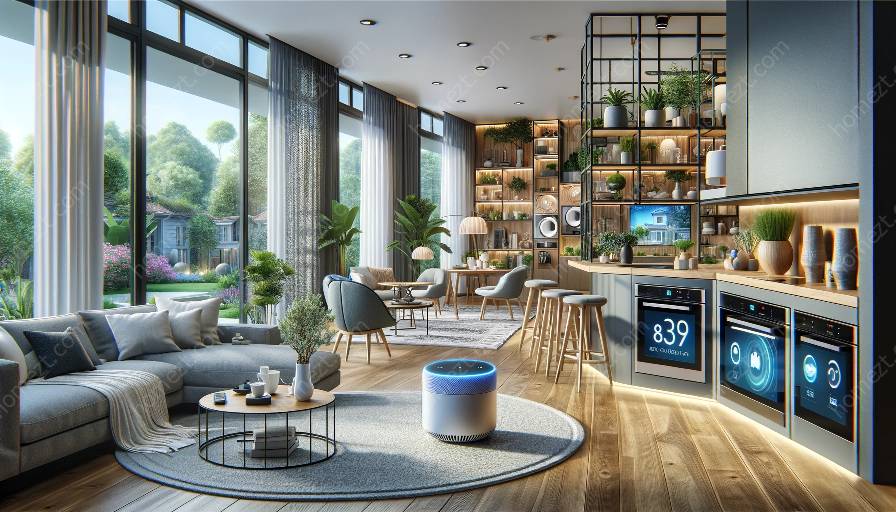With the rise of smart homes, voice-controlled home appliances have become increasingly popular. This article discusses the cost-effectiveness of these appliances in the context of intelligent home design, examining their benefits, drawbacks, and considerations.
The Evolution of Intelligent Home Design
Intelligent home design, often referred to as smart homes, involves integrating various technologies and devices to create a more convenient and efficient living environment. Voice-controlled home appliances are a key component of this trend, offering users the ability to control various household devices using voice commands.
Benefits of Voice-Controlled Home Appliances
Voice-controlled home appliances offer several benefits, including convenience, accessibility, and energy efficiency. These appliances allow users to perform tasks such as adjusting the thermostat, turning on lights, and even ordering groceries with simple voice commands. This convenience can lead to time savings and enhanced quality of life for homeowners.
Cost-Effectiveness Analysis
When considering the cost-effectiveness of voice-controlled home appliances, several factors should be taken into account. These include the initial purchase cost, ongoing maintenance expenses, energy savings, and potential impact on home value. While voice-controlled appliances may have a higher upfront cost compared to traditional devices, they can result in long-term savings through energy efficiency and reduced utility bills.
Initial Purchase Cost
Voice-controlled appliances typically require an initial investment that can be higher than conventional appliances. However, as the market for these devices expands, prices are becoming more competitive, making them increasingly accessible to a wider range of consumers.
Ongoing Maintenance Expenses
It's important to consider the long-term maintenance costs associated with voice-controlled appliances. These may include software updates, compatibility issues, and potential repair or replacement costs. Understanding these ongoing expenses is crucial for assessing the overall cost-effectiveness of these devices.
Energy Savings
One of the key advantages of voice-controlled appliances is their potential to contribute to energy savings. By allowing users to more effectively manage and control their home's energy usage, these appliances can lead to reduced utility bills and environmental impact, making them a cost-effective choice in the long run.
Impact on Home Value
Integrating voice-controlled home appliances into a property's design can also enhance its market value. As smart home technology becomes more mainstream, potential buyers are increasingly interested in properties equipped with these features. This can translate into a higher resale value for homeowners, further contributing to the cost-effectiveness of these appliances.
Considerations for Implementation
While voice-controlled home appliances offer numerous benefits, there are key considerations to keep in mind when incorporating them into an intelligent home design. Issues such as privacy concerns, compatibility with existing devices, and the learning curve for users should be carefully evaluated to ensure a successful integration.
Privacy Concerns
Integrating voice-controlled appliances means introducing devices that are constantly listening for commands. This raises valid privacy concerns, as users must trust that their personal data is secure and not being misused. Addressing these concerns through transparent privacy policies and secure data practices is essential for successful adoption.
Compatibility with Existing Devices
Another consideration is ensuring that voice-controlled appliances are compatible with existing home devices and systems. Seamless integration can maximize the benefits of these appliances and minimize potential technical challenges and frustrations for users.
User Learning Curve
Some users may experience a learning curve when adapting to voice-controlled appliances, particularly older adults or individuals who are less familiar with technology. Providing adequate support and user education can help alleviate this challenge and ensure a smooth transition to voice-enabled home systems.
Conclusion
Voice-controlled home appliances offer a compelling blend of convenience, efficiency, and potential cost-effectiveness within the context of intelligent home design. While initial costs and implementation considerations should be carefully evaluated, the long-term benefits, including energy savings and increased home value, position these devices as an attractive option for homeowners seeking to enhance their living spaces with modern technology.


